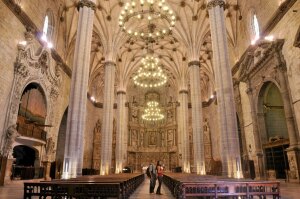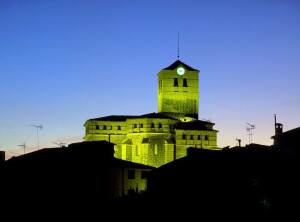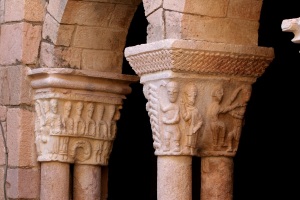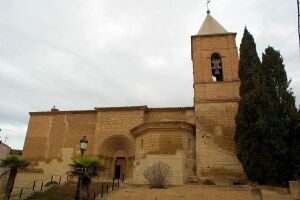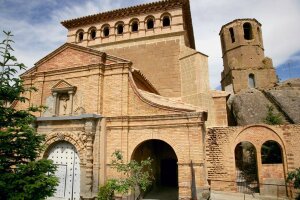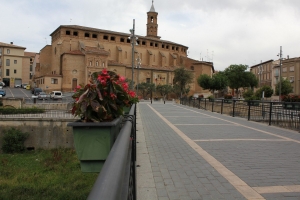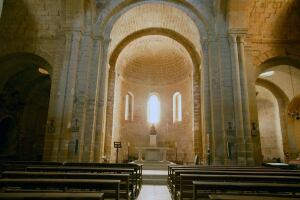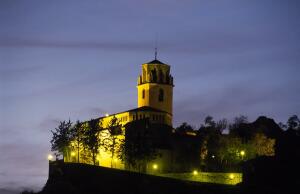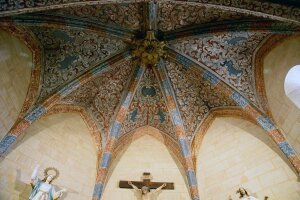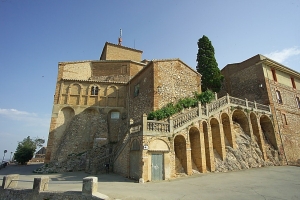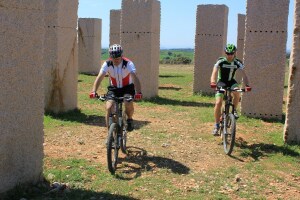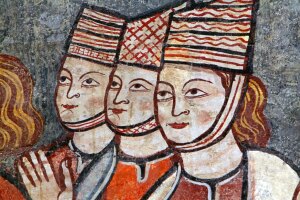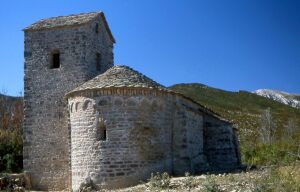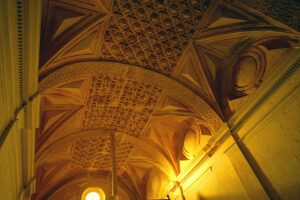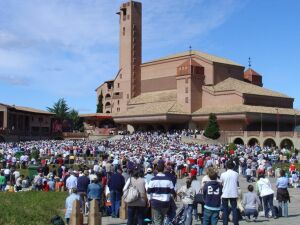This Romanesque church was started at the beginning of the 12th century and was originally planned as a huge church with three apses and three naves topped with barrel vaults.
However work was stopped and did not restart until the end of the 12th century. Consequently the naves were hurriedly finished with the addition of only one more section that was covered with a pointed barrel vault.
As a result of the abandonment of the original project, the main body of the temple is disproportionate with respect to the central apse, which measures 5.5 metres in width. Several windows light the central apse and symbolise the holy trinity; three windows that allow in the only light, equivalent to three persons that make up the only God.
In the Romanesque temples, the main door symbolised the frontier between earth and heaven. “I am the door. By me if any man enter in, he shall be saved.” John: Chapter 10. Its symbolism was so important to the Romanesque temple that it was always the most notable element of the church’s exterior.Six archivolts rest alternately on pillars and columns. The tympanum and the lintel are embedded above the door, which is now blocked.
Christ Pantocrator was chosen to illustrate his coming in the glory of his divinity at the end of all time. In his left hand he holds the book of life and his right hand is raised in blessing. The symbols of the four evangelists are found in the corners, announcing the arrival of Christ to the world; St John is represented by and eagle; St Mark by a lion; St Matthew appears as an angel and St Luke is shown as a bull.The Chi-Rho was one of the earliest types of christograms and is one of the most characteristic elements of Aragonese Romanesque sculpture. It is made up of the first two letters of the Greek spelling of Christ; X (chi) and P (rho). The Latin S alludes to the Holy Spirit and the P to the father; the father, son and Holy Spirit are the three people that make up the one and only true God. A (alpha) and W (omega) are the first and last letters of the Greek alphabet and signify the eternity of God, the beginning and end of all things. The christogram is like a wheel and its three parts, the centre, the exterior circle and the radii are unique but are all part of the same unit, in the same way that the three people of the Trinity make up the same God. This was a popular metaphor in Romanesque sermons.
In the first decades of the 13th century the archpriesthood of Santa Maria was made up of 19 parishes. It was therefore deemed the right moment to enhance the church with the addition of a porch tower in keeping with this extended power.
Its three external walls have wide pointed arches, far removed from the solidity of Romanesque models. By decorating the tower with subtle mouldings, the uniformity of the wall is broken given the appearance of having been sculpted. The capitals are decorated with fantastic animals and dragons. It is possible to see the marks of the stone masons who worked here carved in the stone.
At around the same time that the tower was built, a façade for adorning the main altar was purchased. This was less expensive than decorating the church with murals as it only required the moving of one piece of work rather than recruiting a number of artists.
The painted work on its façade imitated the sumptuous pieces of gold, precious stones and enamelled items that the principal religious centres of western Romanesque Europe possessed. In fact, painted altar panels of this kind were an exception to those found in the rest of Europe and the majority originated from rural locations in Aragon and Catalunya, far from commercial and pilgrim routes.
The legal independence of Berbegal from the bishopric of Lérida at the time the diocese museum was being set up by a group of bishops, ensured that this magnificent piece was kept apart; a unique and exceptional legacy for its true heirs.



